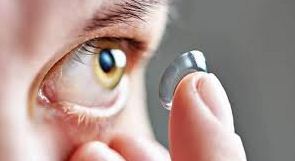Welcome to a comprehensive exploration of biopia, an age-related condition that affects an individual’s ability to focus on objects up close. In this article, we will delve into the intricacies of biopia, its causes, symptoms, available treatments, and practical tips for managing this vision-related challenge effectively
What is Biopia?
Biopia, often referred to as presbyopia, is an eye condition that primarily affects individuals as they grow older. It is a common vision problem that occurs when the eye’s natural lens loses its flexibility, making it challenging to focus on nearby objects. Biopia typically becomes noticeable around the age of 40 and continues to progress with time.
The Mechanics of Biopia
To understand biopia better, let’s explore how the eye works and how this condition disrupts our ability to focus on close objects.
The Eye’s Natural Focusing Mechanism
Our eyes have a remarkable ability to focus on objects at different distances. This is achieved through the eye’s natural focusing mechanism, which involves the cornea, lens, and ciliary muscles.
- Cornea: The cornea is the clear, outermost layer of the eye. It plays a crucial role in refracting (bending) light onto the retina.
- Lens: The lens, located behind the cornea, is flexible and changes shape to adjust the focus on objects at varying distances.
- Ciliary Muscles: These tiny muscles surrounding the lens contract and relax to change the lens’s shape, allowing us to focus on objects up close or in the distance.
The Impact of Aging on the Lens
As we age, the lens of the eye becomes less elastic and loses some of its ability to change shape. This loss of flexibility is the primary cause of bio pia. It leads to difficulties in focusing on close-up objects, such as reading, sewing, or using a smartphone.
Recognizing the Signs of Biopia
Biopia manifests in several noticeable ways, making it essential to recognize the signs and symptoms.
Blurred Vision at Close Range
One of the earliest signs of bio pia is blurred vision when trying to read or perform tasks that require near vision. You may find yourself holding reading material at arm’s length to see it clearly.
Eye Strain and Fatigue
Individuals with biopia often experience eye strain and fatigue, especially after extended periods of reading or working on a computer. This can lead to headaches and discomfort.
Need for Brighter Lighting
To compensate for the loss of close-up vision, people with bio pia may require brighter lighting when reading or engaging in close-up activities.
Difficulty with Small Print
Reading small print or fine details can become challenging, and you may notice that you need to squint or strain your eyes to see clearly.
What Causes Biopia?
Biopia is a natural part of the aging process, primarily caused by changes in the eye’s lens. However, other factors can contribute to the development of this condition.
Age-Related Changes
The most significant factor contributing to bio pia is aging. As we get older, the lens becomes less flexible, leading to difficulties in focusing on close objects.
Genetics
Genetics can also play a role in the development of biopia. If your parents or grandparents had presbyopia, you may be more likely to experience it as well.
Environmental Factors
Prolonged exposure to environmental factors, such as excessive UV radiation or smoking, may increase the risk of developing bio pia.
Diagnosing Biopia
If you suspect you have biopia or are experiencing symptoms of presbyopia, it’s crucial to seek a professional diagnosis from an optometrist or ophthalmologist. They will perform a comprehensive eye exam to confirm the condition.
Treatment Options for Biopia
While biopia is a natural part of aging, several treatment options are available to help individuals manage and alleviate its symptoms.
Prescription Eyeglasses
One of the most common and effective treatments for bio pia is prescription eyeglasses. These glasses are specially designed to compensate for the eye’s reduced ability to focus on close objects.
Bifocal or Progressive Lenses
Bifocal and progressive lenses provide both near and distance vision correction in a single pair of glasses, making them a convenient solution for individuals with biopia.
Contact Lenses
For those who prefer not to wear glasses, multifocal contact lenses offer a similar solution, allowing clear vision at various distances.
Refractive Surgery
In some cases, individuals may opt for refractive surgery procedures like LASIK to correct biopia. This surgical option reshapes the cornea to improve near vision.
Tips for Managing Biopia
In addition to seeking professional treatment, there are several practical steps you can take to manage biopia and ensure a better quality of life.
Regular Eye Exams
Schedule regular eye exams to monitor the progression of biopia and adjust your prescription as needed.
Adequate Lighting
Ensure that you have adequate lighting when reading or working on close-up tasks to reduce eye strain.
Use Larger Text
When reading, choose materials with larger text and fonts to make it easier on your eyes.
Take Breaks
When working on a computer or engaging in activities that require close focus, take frequent breaks to rest your eyes.
Eye Exercises
Practicing eye exercises can help improve the flexibility of your eye’s lens and alleviate some of the symptoms of biopia.
Conclusion
In conclusion, biopia, or presbyopia, is a natural age-related condition that affects our ability to focus on close-up objects. While it is a common part of aging, it can be effectively managed with prescription eyeglasses, contact

